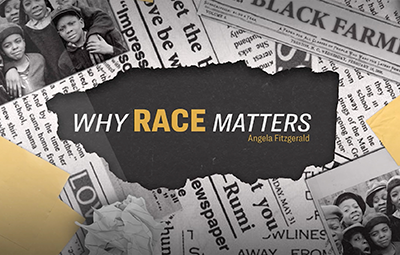Wisconsin Public Television
Transcript: In Wisconsin #911
Air Date: January 20, 2011
Patty Loew:
Welcome to In Wisconsin. Im Patty Loew. This week, a more eco-friendly approach at airports. See what Mitchell International in Milwaukee is doing to control the runoff of toxic de-icers.
Man:
They were somewhat in denial they even had a problem with contaminated runoff.
Patty Loew:
Also a look at specialty cheese made from goats milk and made in Wisconsin.
Woman:
The one thing that we have that nobody else has is the tremendous history and heritage of cheese making.
Patty Loew:
Plus, a camp for kids to discover the science of stem cell research.
Woman:
Empower them and give them the confidence they need to think about a future career in science.
Patty Loew:
Well put this unique camp under the microscope next on In Wisconsin.
Announcer:
Major funding is provided by people of Alliant Energy, who bring safe, reliable and environmentally friendly energy to keep homes, neighborhoods and life in Wisconsin running smoothly. Alliant Energy, were on for you. And Animal Dentists and Oral Surgery Specialists of Milwaukee, Oshkosh and Minneapolis. A team working with pet owners and family vets providing care for oral disease and dental problems of small companion animals.
Patty Loew:
We begin this week with an environmental threat at Wisconsins airports. After some catastrophic winter crashes in the late 1980s and early 1990s, the Federal Aviation Administration created de-icing rules that airports must follow. Are these de-icers safe for the environment? As part of our new reporter project called Quest, In Wisconsin reporter Liz Koerner shows us how researchers are looking for answers in milwaukee.
Liz Koerner:
When the DNR discovered contaminated runoff during a routine inspection of General Mitchell Airport back in 1996, they ordered them to clean up their act.
Paul Luebke:
They were somewhat in denial they even had a problem with contaminated runoff. But shortly thereafter, it became obvious that there were issues with glycol entering first, Wilson Park Creek and then the Kinnickinnic River system.
Liz Koerner:
Glycol is the main ingredient in de-icing fluid. Because General Mitchells management wanted the make cost-effective changes, they asked the United States Geological Survey to run studies on their runoff. Steve Corsi is the lead researcher.
Steven Corsi:
The bottom line is that if you spray chemicals around the environment youre likely to have some sort of environmental impact.
Liz Koerner:
General Mitchell Airport applies 200,000-400,000 gallons of de-icing fluid a year. At the low end, 40 tanker trucks are needed for delivery. They now make an effort to capture some of it before it runs off their property.
Greg Failey:
Our goal is to capture 34% of all the glycol thats applied. And weve been very close on those numbers for the last several years.
Liz Koerner:
They vacuum up some of it with trucks that work like street sweepers. They also have three de-icing pads that collect fluid below ground.
Greg Failey:
All the storm sewers go to a sump crock system, similar to a basement in a house, where this product can be collected and pumped to an above-ground tank.
Liz Koerner:
But there are areas where they dont collect the de-icing fluid. Areas like snow piles, where collection would be costly, and areas where safety comes first.
Greg Failey:
On our taxiways and runways, areas we cannot collect because of safety concerns.
Liz Koerner:
Some of the de-icers decompose where they land but the majority either end up in the groundwater or run into surrounding streams. Corsi and his team have completed seven studies since they began their research in 1996. Some paid for by the airport. They work in collaboration with scientists at the State Laboratory of Hygiene. One study determined how much de-icer it needed to deplete oxygen in water.
Steven Corsi:
If the fish, insects and such in the stream dont have enough oxygen they can basically suffocate, just like you and I in the air.
Liz Koerner:
They discovered that glycol in de-icers isnt the biggest concern. Instead, the chemicals in the additives can be toxic. Their challenge was to find out what those chemicals are.
Steven Corsi:
And try as we might to get the information from the manufacturers, they were unwilling to give us that information, because its basically their business to keep it secret so that they can compete with the other manufacturers.
Liz Koerner:
The additives are used in de-icer as thickeners, corrosion inhibitors and surfactants.
Steve Geis:
That helps the product spread over the airplane efficiently.
Liz Koerner:
They came up with a significant finding about these surfactants.
Steve Geis:
We found the major cause of toxicity were in the surfactants.
Liz Koerner:
Not only are they toxic, they discovered that some contain a chemical that interferes with reproduction. Corsi says manufacturers have responded to this research.
Steven Corsi:
Theyve actually taken some of those additives out of the de-icer formulations and replaced them with more environmentally friendly additives.
Liz Koerner:
The buying power of airports across the country has also pushed manufacturers to go greener.
Greg Failey:
Thats why weve changed several manufacturers through the years in an attempt to get the lowest toxicity formula that we can use at this airport.
Liz Koerner:
Failey says capturing more de-icer isnt cost effective. The best bet is pressuring the manufacturers to make changes. The DNRs Paul Luebke agrees.
Paul Luebke:
Getting additives that arent showing the toxicity is really the key.
Liz Koener:
And an answer to the question about how toxic this airports runoff is, Corsi says theyve discovered that it depends on how much snow melt or rainwater is diluting the streams.
Steven Corsi:
Not a clear-cut answer. It just depends on whats happening during the runoff event.
Patty Loew:
The EPA estimates 25 million gallons of aircraft de-icing fluid are used each year at airports nationwide. New rules are in the works to regulate how much de-icer must be recaptured. As far as Steve Corsi and his staff at the United States Geological Survey, hes now doing exploratory research in Milwaukee and Madison on the impact of road salt in our waterways. To find out more, check out the link on our webpage at wpt.org and then click on In Wisconsin.
Wisconsins dairy industry is promoting new ways to help farmers compete. The focus is on the fast-growing specialty cheese sector. One niche, cheese made from goats milk and made in Wisconsin. Reporter Andy Soth takes you to one of the states largest goat farms to show you how theyre selling the idea.
Gene Zimmerman:
I feel really big.
Andy Soth:
And Gene Zimmerman is big, at least in the small but growing world of Wisconsin goat farming.
That’s why dozens of people interested in goats came out on a gray windy day for a State Ag Department-sponsored Dairy Goat Field Day.
Gene Zimmerman:
I can tell you about goats.
Andy Soth:
I think you had a tremendous turnout for the event.
Gene Zimmerman:
Yeah, I think there was 78. Of course, a couple of them were my mom and dad and my brother just came for the meal. They’re here every day.
Andy Soth:
A meal that included plenty of cheese made from goat’s milk, and it is that growing taste for goat cheese that is feeding the growing interest in goat farming. The number of dairy goat farms has been growing rapidly, 17 Wisconsin counties have one to three goat farms. Ten counties have between four and 10. And five southwestern counties are home to more than then dairy goat farms. And the state has led the nation in the number of milking goats.
Jeanne Meier:
There was a lot of angst a few years ago about what was happening in our dairy industry. California is beating us. So, people took a look at it, and people within the industry took a look at it and said we really need to do some things if we’re going to stop losing farms, if we’re going to stop closing cheese factories.
Andy Soth:
That led to new thinking.
Gene Zimmerman:
I think they finally realized like, hey, Wisconsin is the number one goat dairy state and I believe the number one specialty cheese state. I think they said well, we can’t be the biggest with the cows, so we’ll be the best.
Andy Soth:
You need only visit the grocers dairy case to see the booming consumer interest in specialty cheese, much made from goat’s milk, much of it made in Wisconsin.
Jeanne Meier:
The one thing that we have that nobody else has is the tremendous history and heritage of cheese making.
Andy Soth:
That cheese making heritage dates back to Wisconsins early European settlers who turned their extra milk into cheese in their front kitchens.. Diana Murphy started cheese making in the same way once her family began to raise goats.
Diana Murphy:
I had this milk, and what do I do with it? So I started to read about it and started making cheese in my house. I had more cheese than our family could consume, so I would bring the cheese to Vermont Valley to share with the other workers for our lunches.
Andy Soth:
Vermont Valley is a community supported agriculture farm near Black Earth, where Murphy worked. Before long they asked Murphy to add her goat cheese to boxes of fresh produce they provide members each week during the growing season, but to do that, she would have to be licensed.
Jeanne Meier:
Diana Murphy is just one of those special instances where she had a career off-farm and decided that she was going to milk goats, and that she was going to be a cheesemaker, which is not easy to do. It takes a year or so to get through all those courses and do the apprenticeship.
Diane Murphy:
I took my cheesemaker’s test and passed it, so then I was ready to, I could legally make cheese and sell it.
Andy Soth:
Murphy provides her fresh goat cheese to Vermont Valley’s members and she also sells it at a Madison farmers market, and she entered it in the American Cheese Society Competition.
Jeanne Meier:
Which is the creme de la creme of specialty cheeses in the United States. And she took first place for her goat feta cheese. That’s a real success story.
Andy Soth:
A success that many would-be goat farmers would like to emulate. Especially, it seems, other women.
Jeanne Meier:
I get lots of calls from women who are interested, and often when we have field days, a lot of women come.
Diana Murphy:
The reason I went into goats versus cows is partly because it’s an easier animal to handle. They’re smaller, of course, they’re different than cows in many ways, but just the handling of them is more conducive, I think, maybe to a woman than a cow would be.
Andy Soth:
Gene Zimmerman raised cows, but when he got married, his wife came with goats, and before long they made the switch.
Gene Zimmerman:
You have to love them. Cow farming, you have to love it, too, but these guys are more loveable.
Andy Soth:
While they do share a love of goats, Zimmerman and Murphy are very different goat farmers representing the diversity in this growing industry. Zimmerman has a herd of hundreds, which requires a lot of management.
Gene Zimmerman:
If you’re not a dairy person and don’t have husbandry skills, it won’t work out real well.
Andy Soth:
That means artificial lighting and other techniques to keep the goats breeding, birthing and producing milk year round. Murphy produces seasonally, like the CSA farm she distributes her milk through. The milk from Zimmerman’s hundreds of goats is shipped to a large cheese factory. The milk from the 20 or so Murphy goats gets made on-site into her award winning cheese, a value added product that is worth more.
Jeanne Meier:
There is a lot of diversity within the dairy goat industry just as there is in the dairy cow industry.
Andy Soth:
Together, cows, goats and sheep make for a diverse state dairy industry. Diversity that may help may the industry even stronger for Wisconsin as it strives to evolve from being the biggest to being the best.
Jeanne Meier:
Agriculture is our greatest economic force within this state.
Diana Murphy:
I think cheesemakers work together very complementary. Cheesemakers helping cheesemakers. We have that resource.
Gene Zimmerman:
It’s very exciting.
Patty Loew:
Diana murphy tells us her goats will give birth to kids in late February, and then she can begin milking again and making specialty cheese in the spring. She wont be alone. Specialty cheese production has increased 20% in Wisconsin since 2004.
Stem cell research gives Wisconsin another way to compete in the global arena. It provides hope in the fight against Parkinsons disease, spinal cord injuries and Multiple Sclerosis. Having an ample supply of young scientists could be key to propelling Wisconsin forward in the future. While some kids are at basketball or band camp, reporter Art Hackett found students peering into microscopes in Madison.
Art Hackett:
The arrival looks like any other summer camp. Suitcases, room keys, ID bracelets. What’s different for 20 students from rural Wisconsin high schools and their teachers is what they will be working with the next three days.
Man:
Today, we’ll be encapsulating stem cells.
Art Hackett:
Stem cells, cells often, but not always cultured from human embryos which can be coaxed into becoming like those in our heart, our pancreas or the nerves in our spinal cord.
Man:
That’s your job today, is to isolate the neural cells and purify these cultures of cells.
Art Hackett:
The camp is sponsored by WiCell, the University of Wisconsin-Madison’s institute for stem cell research.
Rupa Shevde:
There was a very small percentage of rural Wisconsin high school students who were comfortable coming to a big campus like UW-Madison, so we thought that this would be a great idea to bring them to campus to help them see what kind of science is being done, to help them alleviate their fear of the unknown and of the campus, and at the same time empower them and give them the confidence they need to think about a future career in science.
Woman:
So, if you have a bubble somewhere on your slide, if you just sort of gently tap the stamp.
Allison Schmidt:
We did passaging of cells where we put them in new plates to grow.
Woman:
And you’re ready, so now you want to flip it upside down.
Art Hackett:
The students made structures to hold stem cells together, to form tissues.
Man:
Tissue engineering is scaffold mixed with cells. Thats exactly what were doing. We’re taking our scaffold and embedding our cells.
Art Hackett:
Right now, the tissues are things like the cartilage in your ear, the campers see an even greater promise in the future.
Ellyn Schmelz:
I hope that they’re able to finally transplant organs. I think that’s a major thing that should be done with them. It’s just, it would help so many people.
Rupa Shevde:
Like last year and the year before, we hope you’ll say this is the best camp you’ve ever attended.
Art Hackett:
The camp began in 2007. That was the year after a national election in which stem cells were a hot button issue.
Michael J. Fox:
What you do in Missouri matters to millions of Americans, Americans like me.
Art Hackett:
Most stem cells come from human embryos left over from in-vitro fertilization procedures.
Michael J. Fox:
Some senators even wanted to criminalize the science that gives us a chance for hope.
Art Hackett:
Then and now, the camp begins with a presentation by a medical ethicist.
Linda Hegel:
Whether you’re going to be working with patients or working in basic discovery science, whether it’s stem cells or nano technology, you will be coming across policy and ethical and political issues. They’re just going to be there.
Michael J. Fox:
I care deeply about stem cell research.
Caitlin Bowie:
I knew that there was a great deal of potential in the technology, but I had no idea where it was or how it was done.
Art Hackett:
Caitlin Bowie of New Glarus attended the first stem cell camp in 2007. She had paid attention to the ads with Michael J. Fox.
Caitlin Bowie:
Michael J. Fox has Parkinsons disease and that’s a disease that’s pretty similar to my mom’s disease, which is MS. And it was really interesting to see someone talk about how promising it could be. Especially for a disease that was so similar. It made me think, if it’s promising for Parkinsons, there’s probably a lot of potential for it to help patients with MS.
Art Hackett:
Bowie wrote about her mother’s Multiple Sclerosis in her essay seeking admission to the camp.
Caitlin Bowie:
Nine years ago, my mother was diagnosed with MS and I’ve watched her cope with the results of her condition for more than half of my life. If there was any way for my mom to walk again, to cure her illness, then I would pursue it wholeheartedly.
I had been under the impression that it was a fix-all, just inject stem cells and it will grow a body part or repair a damaged liver, or something like that, but it’s so much more complicated than that.
Man:
That’s the kind of thing we’re looking at. Its the small changes in people’s lives and I think you get involved with trying to cure ALS to play tennis again, but were dealing with small stuff.
Art Hackett:
Caitlyn Bowie is now a student at UW-Eau Claire with a double major in biology and art. She asked if she could come back to this year’s camp and see what changed.
Caitlin Bowie:
There’s a few different presentations that they’ve made. Theyve made a couple advances that are really intriguing.
Man:
When youre doing that, you should be seeing the neural parts of those colonies fall right off.
Art Hackett:
Bowie spent time under a lab hood sorting stem cells which then turned the into nerve cells.
Caitlin Bowie:
It seems like it’s taking a long time, but when you look at the leaps and bounds they’re making in a matter of three years only, it’s pretty impressive.
Art Hackett:
And she learned applications involving the nervous system are progressing faster than other areas of stem cell science.
Man:
The only approved stem cell transplant trial in America is the so-called Geron Trial. Has anybody heard about that? You already talked about that? For spinal cord injury. The idea is that in spinal cord injuries you lose myelin around the cells.
Art Hackett:
Myelin acts as an insulator between nerve cells and the other cells that surround them.
Caitlin Bowie:
In MS, the myelin coating on the nerves is destroyed and it disrupts the connection between your brain and it telling your muscles in your body to do things. So if they could somehow repair the myelin, I feel like that would do so much good for MS and I think it would provide a lot of hope.
Art Hackett:
Perhaps hope for Caitlin’s mother.
Patty Loew:
One of the stem cell campers is looking for his own cure, and he’s on a very personal quest. Here’s a preview of his story airing next Thursday on “In Wisconsin.”
Art Hackett:
This is “In Wisconsin” reporter Art Hackett. Cody Gensen is searching for answers deeper than his local science class can provide.
Cody Gensen:
There’s not very much science up here that is involved. That you can just be a part of.
Art Hackett:
Learn why he went on a quest to a unique camp at UW-Madison.
Patty Loew:
An update now on a report we first brought you six years ago about an unexpected visitor to Wisconsins northwoods. In the winter of 2005, food was so scarce in Canada the great gray owls moved south in record numbers. At that time there was a prediction they could return. In Wisconsin reporter Jo Garrett shows you the phantoms of the north in Douglas County.
Robbye Johnson:
For us to have this many in Wisconsin is just jaw dropping. It is beyond what anybody has ever seen. Mind-boggling, jaw dropping. Once in a lifetime experience.
Its a huge owl from the north. Evidently, the small rodent population in Canada is so small that these owls got really hungry up there and they moved south. And if they hadnt moved, they would be starving to death by the hundreds. I would guess there is at least 100 birds in Douglas County.
Jo Garrett:
In a normal year how many great gray owls would be here?
Robbye Johnson:
If youre lucky, one.
Its a cycle similar to, say, grouse and goshawk. Every ten years or so, the grouse are real high in numbers and they plummet and the goshawk follows. Rabbits and foxes, is another cycle. Its the same with the mice and the owls. Very docile animal, eats mice. Diurnal, which means it hunts in the daytime rather than the middle of the night. They like to hunt at least a corridor of open country. Thats why theyre found along roads so much. They hunt with their ears. You can see them watching the snow, clueing in on where the mouse is and theyll plunge in the snow without ever seeing the rodent. They hunt by sound, even when theyre hunting in the daytime and can see really well. They do it by hearing.
You can pull up right across from an owl, but keep in mind that if hes hungry, just the vibration from your car could be messing up him hearing. The bird is counting on being able to hear a mouse walking under the snow in order to eat. So a lot of traffic or cars sitting and idling definitely interfere with that bird eating. Ive heard there are people here from New York and California, and everything in between. Ive seen great gray owls before, but there are so many. There is something special about driving around and seeing 20 in a day. You end up giggling. There is another one, there is another one. Never heard of something like this before.
Patty Loew:
Those magnificent birds are the worlds tallest owls. We checked with Robbye Johnson this week to see if the gray owls did return as predicted six years ago. So far they have not. Every year, a few great grays make their way to Minnesota, but since that incursion in 2005, Johnson, an avid birder, has never seen another great gray owl in Wisconsin.
Now heres a look at some of the reports were working on for the next edition of In Wisconsin.
Street cars in Wisconsin.
Man:
Milwaukee has an opportunity to bring street cars back after an absence since 1958, when the last ones operated.
Patty Loew:
This week, new information about the low speed rail plans for Wisconsins largest city with answers coming from as far away as Germany.
Andy Soth:
This is In Wisconsin reporter Andy Soth. Youll see robo deer in action. Its not just Bambis hi-tech brother thats helping the DNR move in and take down poachers.
Patty Loew:
Also Frank Lloyd Wrights vision for America.
Man:
This is the only Model B-1 of the American System Homes that was ever built.
Patty Loew:
See how one Milwaukee neighborhood is being transformed.
Join us for those In Wisconsin reports next Thursday at 7:30 right here on Wisconsin Public Television.
Finally this week, a journey to Pewits nest. In winter the waterfalls along Skillet Creek are frozen in time. The deep gorge was formed during the retreat of the last glacier. Pewits Nest is owned by the Department of Natural Resources and was designated a State Natural Area in 1985. Enjoy the view and have a great week In Wisconsin.
Announcer:
Major funding is provided by people of Alliant Energy, who bring safe, reliable and environmentally friendly energy to keep homes, neighborhoods and life in Wisconsin running smoothly. Alliant Energy, were on for you. And Animal Dentists and Oral Surgery Specialists of Milwaukee, Oshkosh and Minneapolis. A team working with pet owners and family vets providing care for oral disease and dental problems of small companion animals.
Search Episodes

Donate to sign up. Activate and sign in to Passport. It's that easy to help PBS Wisconsin serve your community through media that educates, inspires, and entertains.
Make your membership gift today
Only for new users: Activate Passport using your code or email address
Already a member?
Look up my account
Need some help? Go to FAQ or visit PBS Passport Help
Need help accessing PBS Wisconsin anywhere?

Online Access | Platform & Device Access | Cable or Satellite Access | Over-The-Air Access
Visit Access Guide
Need help accessing PBS Wisconsin anywhere?

Visit Our
Live TV Access Guide
Online AccessPlatform & Device Access
Cable or Satellite Access
Over-The-Air Access
Visit Access Guide
 Passport
Passport






Follow Us